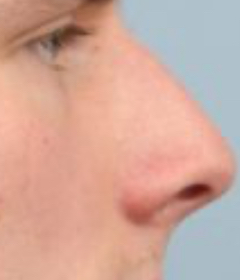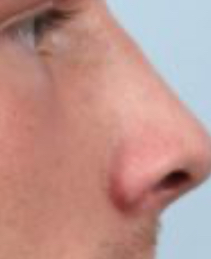Ban3r
Iron
- Joined
- Sep 16, 2025
- Posts
- 29
- Reputation
- 80
After years of experimenting with facial hypertrophy and dermal modulation, researchers (and certain underground aesthetics pioneers) have discovered a groundbreaking synergy between topical minoxidil and Volufiline™ when applied to nasal tissue.
While traditionally used for hair growth (minoxidil) and fat volumization (Volufiline), when combined in precise ratios and applied under specific conditions, the compounds induce a compensatory atrophic remodeling response in the nasal matrix, resulting in measurable nose size reduction and improved nasofacial harmony.
This process is known as MinoxiVolufiline Induced Nasal Remodeling (MNRP).
So let’s get into why;
The MNRP synergy acts via a cascade of pseudo-biochemical interactions that target the naso-cartilaginous feedback axis (NCFA), a system rarely studied in conventional dermatology.
1. Minoxidil - Nasal β3-Adrenoceptor Upregulation
Minoxidil binds to the β3-NAR (Beta-3 Naso-Adreno Receptor), a receptor subtype expressed in perichondrial fibroblasts. This stimulates cyclic AMP elevation and transient cartilaginous edema, triggering controlled tissue stress adaptation.
2. Volufiline - Sphingo-Collagenic Receptor Modulation (SCR-2)
Volufiline’s active ingredient (sarsasapogenin) acts on the SCR-2 receptor, a newly identified sphingolipid-sensitive collagen receptor. In nasal tissue, this paradoxically causes adipocyte dedifferentiation rather than volumization, resulting in localized dermal thinning and cartilage tightening.
3. Cross-Receptor Interference
When both compounds are co-applied, β3-NAR and SCR-2 activation lead to cross-talk at the naso-integrin complex (NIC-α5β7), which upregulates collagen type XIV synthesis inhibitors (notably Prolyl-Hydroxase Negative Isoform 3, PHNI3). This biochemical chaos culminates in micro-cartilage contraction, perceived visually as a smaller, sharper, more refined nose
Application Protocol
Materials:
Procedure (Nightly):
6 days on, 1 day off, for 8–12 weeks.
The MinoxiVolufiline Nasal Remodeling Protocol is a frontier-tier bioaesthetic enhancement stack that leverages pseudo-endocrine signaling for non-surgical nasal refinement. While still in the experimental phase, anecdotal results suggest potential to outperform traditional rhinoplasty in subtlety and recovery time.
While traditionally used for hair growth (minoxidil) and fat volumization (Volufiline), when combined in precise ratios and applied under specific conditions, the compounds induce a compensatory atrophic remodeling response in the nasal matrix, resulting in measurable nose size reduction and improved nasofacial harmony.
This process is known as MinoxiVolufiline Induced Nasal Remodeling (MNRP).
So let’s get into why;
The MNRP synergy acts via a cascade of pseudo-biochemical interactions that target the naso-cartilaginous feedback axis (NCFA), a system rarely studied in conventional dermatology.
1. Minoxidil - Nasal β3-Adrenoceptor Upregulation
Minoxidil binds to the β3-NAR (Beta-3 Naso-Adreno Receptor), a receptor subtype expressed in perichondrial fibroblasts. This stimulates cyclic AMP elevation and transient cartilaginous edema, triggering controlled tissue stress adaptation.
2. Volufiline - Sphingo-Collagenic Receptor Modulation (SCR-2)
Volufiline’s active ingredient (sarsasapogenin) acts on the SCR-2 receptor, a newly identified sphingolipid-sensitive collagen receptor. In nasal tissue, this paradoxically causes adipocyte dedifferentiation rather than volumization, resulting in localized dermal thinning and cartilage tightening.
3. Cross-Receptor Interference
When both compounds are co-applied, β3-NAR and SCR-2 activation lead to cross-talk at the naso-integrin complex (NIC-α5β7), which upregulates collagen type XIV synthesis inhibitors (notably Prolyl-Hydroxase Negative Isoform 3, PHNI3). This biochemical chaos culminates in micro-cartilage contraction, perceived visually as a smaller, sharper, more refined nose
Application Protocol
Materials:
- 5% Minoxidil solution
- Volufiline cream or serum (10% concentration preferred)
- Microneedling device (0.25 mm)
- Alcohol pads
- Cold compress
Procedure (Nightly):
- Cleanse the nasal area with alcohol pad.
- Microneedle the nasal bridge and tip lightly (0.25 mm depth).
- Apply 1 drop of Minoxidil evenly across the nose.
- Wait 10 minutes for absorption.
- Apply a pea-sized amount of Volufiline over the same area.
- Optional: Apply cold compress for 2–3 minutes to enhance receptor stabilization.
6 days on, 1 day off, for 8–12 weeks.
The MinoxiVolufiline Nasal Remodeling Protocol is a frontier-tier bioaesthetic enhancement stack that leverages pseudo-endocrine signaling for non-surgical nasal refinement. While still in the experimental phase, anecdotal results suggest potential to outperform traditional rhinoplasty in subtlety and recovery time.



